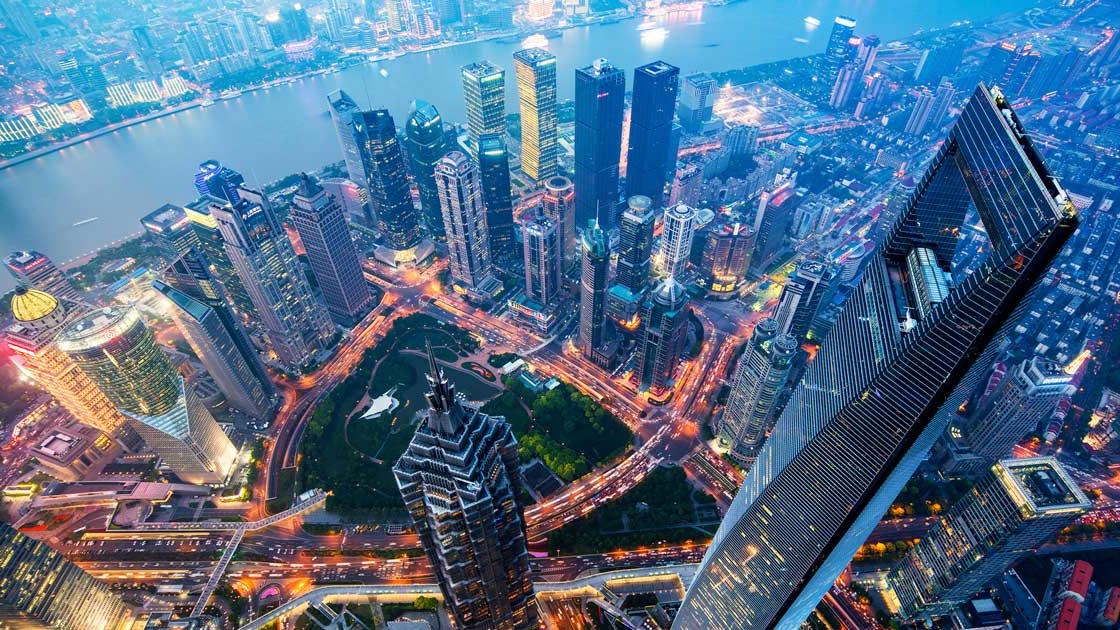Arriving by flight to Hong Kong before 1998 would have involved a carefully charted landing route that gave passengers a direct view into the high-rise apartment buildings that stood alongside the runway. These tightly-bunched, concrete towers were only allowed to be built to a height of 13 or 14 floors because of their proximity to the airport. The descent has been described by many-a-passenger as truly unique: having to land the plane in between the narrow and clustered Kowloon-side of Hong Kong with buildings to one side, and the ocean harbor on the other. Much has changed in the nearly twenty years since the handover of Hong Kong by Britain to the government of the People’s Republic of China, including the location of the airport. What else has changed?
Construction Boom
The historic handover of Hong Kong was precipitated by a surge in infrastructure investment. Among the construction projects were a new international airport (relocated to Lantau Island), a new seaport, and the Hong Kong University of Science and Technology. These were undertaken by the Hong Kong government and dubbed the “Rose Garden Project” to help maintain confidence in the economy ahead of the transition of control, thereby mitigating a larger wave of emigration out of Hong Kong.
Mainland Exchange
The new political arrangement greatly buoyed cross-border traffic between China and Hong Kong. Gradually, the daily number of Mainland Chinese visitors to Hong Kong began to climb higher. The timing was perfect; as China was poised to begin its rise in economic power, Hong Kong was well-positioned to benefit. Many Chinese with newfound wealth began to make regular shopping trips to Hong Kong and nearby Macau. This momentum was so great that it propelled the shopping area of Causeway Bay to become one of the most productive retail shopping spaces (measured by sales per square meter) on the planet. Following from that success were subsequent increases in rent expectations from landlords, which then led Causeway Bay to also become the second most expensive retail space on the planet (rent per square meter). The large numbers of shoppers and their willingness to pay was more than enough to justify the high rentals and attracted a flurry of high-end luxury brand shops.
Recently, however, Chinese travelers have been diversifying their travel and shopping experiences. Changes in visa requirements to countries like Thailand, as well as targeted marketing campaigns from countries like Australia, have helped siphon away mainland tourists formerly bound for Hong Kong. As a result, those high-end retailers are beginning to feel the pinch; some have even shifted out of high-street locations like Causeway Bay, releasing those spaces at lower rents to fast fashion brands that remain attractive with their reasonable price points.
Suggested Reading:
Economy
While Hong Kong has long been an economic and financial hub of Asia, that is slowly beginning to change. Driving the erosion of this status position is the increasing importance of Shanghai and other coastal cities like Shenzhen. In the case of Shanghai, the South China Morning Post reports that the city’s “ambitions to become the nation’s economic engine, leapfrogging Hong Kong as the dominant financial hub in the region,” will be boosted by government sanctioned advantages such as the new free-trade zone. Shenzhen is also poised to capitalize on a weakening Hong Kong, as both cities port along the same body of water. Prior to the opening and liberalization of China’s trade markets, the role of Hong Kong as mediator between exports and imports was a main factor in both economies. Nowadays, however, facilitating trade directly through the mainland may help to reduce costs and time needed to process. Eventually, it may not make business sense to have Hong Kong serve as a third-party clearinghouse for trade.
Beyond the economic realm, Hong Kong still remains a very different place from China culturally, socially, and politically. At present, only those adjustments to China’s economic policy seem to have lasting impact. In this regard, Hong Kong should be a useful case study for Colorado and U.S. businesses operating in China as future adjustments to the country’s policies are considered.

